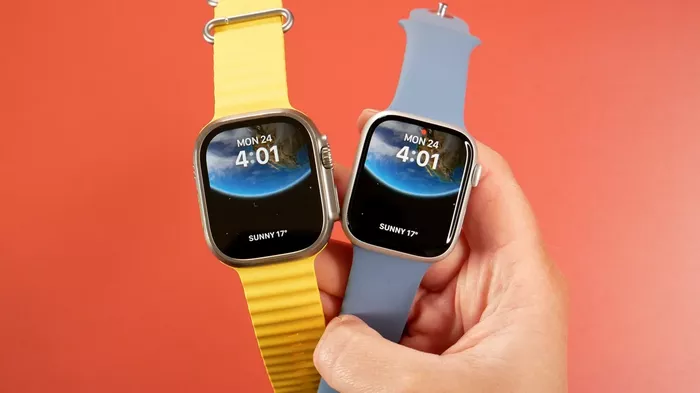The watch industry is a fascinating blend of history, craftsmanship, and innovation. For enthusiasts, it offers a rich tapestry of stories and technical marvels that span centuries. This article aims to delve into the various aspects of the watch industry, from its historical roots to modern advancements, and provide a detailed examination of the Apple Watch Series 3’s screen size as part of the broader narrative.
Historical Roots of the Watch Industry
The Birth of Timekeeping
The concept of timekeeping dates back to ancient civilizations. Early methods included sundials and water clocks. The mechanical clock emerged in the 14th century, revolutionizing timekeeping.
Evolution of Watches
The first wearable watches appeared in the 16th century. These early timepieces were often pendants worn around the neck. The wristwatch, as we know it today, became popular during World War I for its practicality.
Key Milestones
16th Century: Invention of the portable watch.
18th Century: Introduction of the balance spring, improving accuracy.
19th Century: Mass production of watches begins.
20th Century: Quartz movement revolutionizes the industry.
Craftsmanship in Watchmaking
The Art of Horology
Horology is the science and art of timekeeping. Master watchmakers spend years perfecting their craft, creating intricate movements that power mechanical watches.
Iconic Watchmakers
Rolex: Known for precision and luxury.
Patek Philippe: Renowned for complex movements and timeless design.
Omega: Famous for its association with space exploration and the Olympics.
The Watchmaking Process
Design: Conceptualizing the watch’s aesthetics and functionality.
Movement Assembly: Creating the intricate mechanism that powers the watch.
Case and Dial Making: Crafting the exterior and face of the watch.
Testing: Ensuring accuracy and durability.
Modern Advancements in the Watch Industry
The Quartz Revolution
In the 1960s, Seiko introduced the first quartz watch. This new technology was more accurate and affordable, disrupting the traditional mechanical watch market.
Smartwatches
The 21st century has seen the rise of smartwatches, blending technology with traditional watchmaking. Brands like Apple, Samsung, and Garmin have become major players.
Sustainability in Watchmaking
Modern watchmakers are increasingly focusing on sustainability, using recycled materials and eco-friendly practices.
The Apple Watch Series 3: Screen Size and Features
Introduction
The Apple Watch Series 3, launched in 2017, marked a significant step in the evolution of smartwatches. It introduced cellular connectivity, allowing users to make calls and send texts without their iPhone.
Screen Size Details
The Apple Watch Series 3 comes in two sizes:
38mm Case Size:
Screen Resolution: 272 x 340 pixels
Display Area: 563 sq mm
42mm Case Size:
Screen Resolution: 312 x 390 pixels
Display Area: 740 sq mm
Features
Cellular Connectivity: Stay connected without your iPhone.
GPS and Altimeter: Track your outdoor activities.
Water Resistance: Suitable for swimming.
Heart Rate Monitor: Keep track of your health.
Siri Integration: Voice-activated assistance.
Activity Tracking: Comprehensive fitness monitoring.
Technical Specifications
Processor: Dual-core S3 chip.
Operating System: watchOS 4 (upgradable).
Storage: 8GB (non-LTE) / 16GB (LTE).
Battery Life: Up to 18 hours.
See Also: How Much To Replace Screen Apple Watch Series 3
The Impact of Smartwatches on the Traditional Watch Industry
Market Trends
Smartwatches have gained significant market share, appealing to tech-savvy consumers. This shift has prompted traditional watchmakers to innovate and integrate smart features.
Consumer Preferences
Today’s consumers often seek multifunctional devices. Smartwatches offer fitness tracking, notifications, and connectivity, meeting these demands.
Integration of Technology
Traditional brands like TAG Heuer and Montblanc have introduced smartwatches, blending classic design with modern technology.
Collecting and Investing in Watches
Why Collect Watches?
Collecting watches is a passion for many enthusiasts. Each timepiece tells a story, representing a piece of history and craftsmanship.
Types of Collectible Watches
Vintage Watches: Timepieces from the past, often with unique stories and designs.
Limited Editions: Rare watches with limited production runs.
Luxury Watches: High-end brands known for their quality and prestige.
Investment Potential
Watches can be valuable investments. Brands like Rolex and Patek Philippe often appreciate in value over time. Key factors include brand reputation, rarity, and condition.
Future of the Watch Industry
Innovations on the Horizon
The watch industry continues to innovate. Potential future advancements include:
Enhanced Smartwatch Capabilities: Improved health monitoring and integration with smart home devices.
Sustainable Materials: Greater use of eco-friendly materials and practices.
Customization: Increased options for personalization and modular designs.
Challenges and Opportunities
The industry faces challenges such as changing consumer preferences and competition from tech companies. However, opportunities lie in blending tradition with technology and expanding into emerging markets.
Conclusion
The watch industry is a dynamic field that blends history, craftsmanship, and innovation. From the intricate movements of mechanical watches to the cutting-edge features of smartwatches, there is something for every enthusiast. The Apple Watch Series 3 exemplifies the fusion of traditional watchmaking and modern technology, offering a glimpse into the future of timekeeping. Whether you are a collector, an investor, or simply a lover of fine timepieces, the world of watches offers endless possibilities to explore and appreciate.

